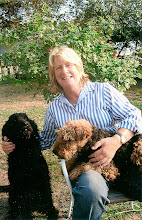It was evident when judging the 1*, 2** and 3*** dressage at Naracoorte that at all levels there is confusion between tempo and impulsion. If one imagines a line with speed at one end and impulsion at the other end then it becomes clear, even to bold cross-country riders, that the closer the horse is ridden towards the speed end of the line the further away it is from the impulsion end.
Speed is the kilometres per hour and Tempo is the speed of the steps (or rhythm). Impulsion is the controlled energy originating in the horse's hindquarters. So if the horse is not in self-carriage and it is going at too fast a tempo its steps will become flatter and further away from impulsion and suspension. The steps may become longer and the outline hollow as the horse loses its balance as it is chased on to the forehand, or the steps may shorten as the horse attempts to balance itself.
In either case the horse will use its under neck muscles as the brake and so the horse will be unable to keep its back soft and relaxed. As a result it will lose the ability to go forward freely and with cadence.
Cadence is the art form of dressage where strength, balance, tempo, impulsion and self-carriage merge together to give the 'wow' factor. It is at this point that a rider has the option to up the tempo if desired. This is where the rider is able to 'perform' a dressage test, rather than just 'survive' it.
There are marks for transitions at the beginning and end of medium and extended trots and canters. These are marks that are just 'wasted'. The only people aware of them seemed to be the judges as most of the riders certainly were not - or their tempo was so fast that they did not have time to show clear transitions.
I found it most frustrating at Naracoorte to see some nice moving and obedient horses that have obviously had extensive dressage training lose heaps of marks due to incorrect tempo on the day.
The corners of the arena are the framework of riding a dressage test. When ridden with correct flexion and bend they allow the rider to prepare for the next movement.
In several of the FEI 'B' eventing tests there are 20m half circles in both medium canter and counter-canter. Many riders gave themselves little chance of preparing for the following movements as their circles started and finished too early.
It is always exciting to judge a good horse going well and being ridden superbly. There were a few tests that I hope will be just as good, or even better, at Melbourne 3 Day Event in June - rhythmic, flowing, controlled and full of activity - and of course these were ridden at just the right tempo for the horses' performance on the day!
Subscribe to:
Post Comments (Atom)

No comments:
Post a Comment